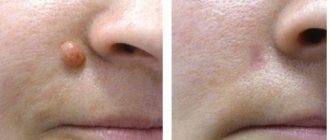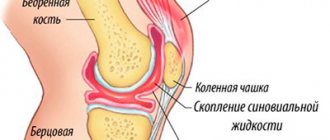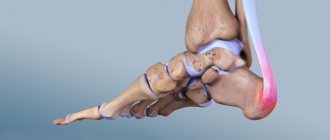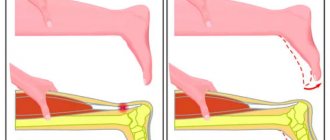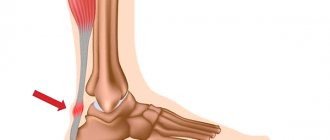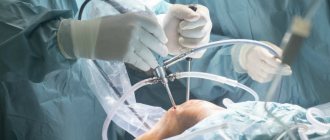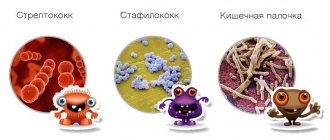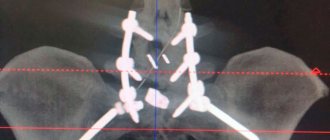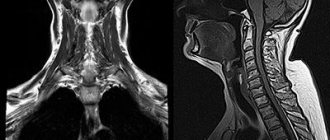Reception is conducted by:
Antipenko Vyacheslav Vladimirovich -
Surgeon
Make an appointment
Guseinov Arif Ziyadovich -
Oncologist, mammologist, Honored Doctor of the Russian Federation, Professor, Doctor of Medical Sciences
Make an appointment
Tendon ganglion (hygroma) is a benign neoplasm that occurs at the base of the fingers or toes. The tumor resembles a small “pea” filled with a gel-like liquid. Complete treatment of the ganglion is only possible with its surgical removal. Conservative therapy is ineffective. The specialists of the Profimedica clinic are fluent in the technique of removing tumors without risks to the patient.
Doctors surgeons
Dzhadzhiev Andrey Borisovich Surgeon
Appointment fee 1500
₽
Make an appointment
Marynich Alexander Alexandrovich Vascular surgeon, phlebologist, angiologist
Cost of admission 1500
₽
Make an appointment
Myshlyaev Anton Vsevolodovich Surgeon coloproctologist
Cost of admission 2000
₽
Make an appointment
Preparing for removal
Before proceeding with surgery to remove the tendon ganglion, the surgeon conducts an examination to identify hidden complications and make an accurate diagnosis. The doctor prescribes:
- clinical blood and urine tests, as well as biochemistry tests;
- blood tests for RW, AIDS, hepatitis;
- radiography;
- Ultrasound;
- ECG;
- histological studies.
After successful completion of the tests and the absence of contraindications, surgery is prescribed.
Diagnostics
Photo: likarni.com
Diagnosing a ganglion is usually not difficult. However, if the ganglion is small and located deep under the ligament, it may go undiagnosed for a long time or be mistaken for another disease. Sometimes pain appears before the swelling characteristic of the ganglion has occurred, which can also lead to a diagnostic error.
At the appointment, the doctor asks the patient about the medical history, its symptoms and performs an examination. Most ganglia are recognized based on appearance and location. Sometimes examination is not enough to make an accurate diagnosis. In this case, the doctor has quite a wide scope for choosing a diagnostic method. He may order the following studies:
- X-ray examination. This method allows you to determine the nature of the neoplasm and carry out differential diagnosis with other similar pathologies;
- Ultrasound of the tumor and adjacent tissues is performed in order to distinguish a non-bone tumor from a cyst. In this case, it is possible to determine what kind of cyst it is: consisting of one chamber or many;
- CT. This is the most advanced of the x-ray methods, allowing you to determine the connection of the tumor with the bone, synovial sheath or joint. The most accurate method is the one using a contrast agent. It allows you to determine the degree of vascularization of the tumor. It is known that high vascularization is a sign of malignancy of a neoplasm;
- puncture - pumping out fluid from the ganglion cavity using a special needle, after which the resulting material is sent to the laboratory for histological examination. Histological examination data are necessary to distinguish hygroma from other similar benign and malignant tumors. In some cases, evacuation of fluid is one of the treatment options, leading to recovery.
Most often, hygroma requires differential diagnosis with lipoma (fat), atheroma and lymphadenitis. In order to avoid mistakes and make the correct diagnosis, it is important to perform the above studies, which will help to understand this or that situation. Therefore, it is important, as soon as you discover a tumor, to seek help from a doctor who will perform the necessary range of examinations and prescribe appropriate treatment.
Operation methods
Surgery to remove a tendon ganglion in the hand or other area is performed using local anesthesia. In rare cases, with the use of regional anesthesia. The total duration of the procedure can take up to 40 minutes, no more.
The process of removing the formation is a complete resection of the cyst capsule with its contents, and is carried out by two methods:
- Bursectomy is a surgical procedure using a scalpel;
- laser exposure - removal of the ganglion using a laser scalpel.
The puncture (blockade) method can also be used, in which a needle is inserted into the capsule of the tendon ganglion, for example, on a finger, and the accumulated synovial fluid is sucked out. After which the capsule is filled with a medicinal substance (sclerosant, antiseptic, hormonal, etc.) which, by its action, reduces the volume of tissue in the cyst shell.
This method of treatment is rarely used, most often on small tumors, up to 10 mm.
How does hygroma appear?
Tendon sheaths are sheath-shaped; they surround the tendons of the long muscles in the area of the joint or bony prominence and are designed to facilitate the sliding of the tendons.
The vaginal cavities are filled with fluid. When the walls of the tendon sheath are damaged, fluid spills into nearby tissues. Hygromas can be single-chamber or multi-chamber. The latter appears as a result of several effusions of serous fluid, which can be localized in one or several areas. According to the structure of the ganglia, they are divided into the following types:
- Isolated.
The spilled liquid is in a confined space and does not have a connecting “bed” with the tendon sheath, which is filled with its own substance.
- Anastomosis.
A new cavity is formed, the fluid of which moves freely from it to the tendon sheath and back.
- Valve.
The serous fluid completely moves to a new location. A barrier formed in the tissue, called a valve, prevents it from returning to the empty vagina.
Such pathologies can occur in almost any joint, but most often occur in places such as:
- wrist joint;
- popliteal area;
- feet;
- fingers and toes.
According to statistics, these cystic formations are most often diagnosed in women aged 20–30 years.
Rehabilitation period
After surgery, the patient can immediately return home and begin performing light work that does not strain the operated area.
During a short period of rehabilitation, the patient is advised to undergo daily dressings with antiseptic wound treatment, and physical therapy sessions to develop the limb if the tendon ganglion is located, for example, on the foot or hand.
The sutures are removed after 7-12 days, and the plaster fixing tape is removed 2-3 weeks after surgery.
Medicines
Photo: yachist.ru
Considering that the main method of treating ganglion is surgery, drugs are practically not used. Painkillers (analgin, diclofenac) may be prescribed during the postoperative period if pain is present. In addition, they have an anti-inflammatory effect, which is also important in the postoperative period.
Also, some patients are very worried about the upcoming operation, despite the small size of the operation. In this case, it may be advisable to use sedatives based on herbal components. These are drugs that help reduce increased irritability and have a pronounced general calming effect. The drug from valerian is the most common representative of this group among the population. The sedative effect is achieved due to the inhibitory effect on the central nervous system, as a result of which excitation processes are inhibited. It is important to note that the sedative effect when using valerian appears slowly, is quite stable and fully develops with systematic and long-term course treatment. Side effects that occur while taking the drug appear very rarely. It is possible to develop an allergic reaction in the form of skin rash, itching, hyperemia and swelling of the skin due to individual intolerance to valerian. The use of large doses of the drug can lead to the development of bradycardia (decreased heart rate), as well as constipation, which occurs due to decreased intestinal motility.
Possible complications
Without timely treatment of tendon ganglion, some complications may occur:
- tumor pain;
- compression of blood vessels;
- disruption of blood supply to tissues;
- blood stasis.
Despite the fact that the operation is simple, after it the following may rarely occur:
- wound bleeding;
- infection;
- temporary traffic restrictions;
- damage to nearby organs and structures.
But thanks to the high professionalism of the surgeons on the staff of our KDS Clinic medical center, complications after the operation are minimal and almost zero.
Why is a hygroma (tendon ganglion) dangerous?
The neoplasm itself is not dangerous. However, as it grows, it begins to cause attacks of pain, usually occurring after loading the corresponding joint. In some cases, depending on the location and size, the hygroma begins to compress the blood vessels and nerve bundles. This can lead to the following complications:
- Paresthesia
- a sensitivity disorder, expressed in numbness, burning, tingling.
- Hyperesthesia
- This is a manifestation of pain, increased sensitivity to touch.
- Venous stagnation
- obstruction of blood outflow, worst case scenario. This can lead to the formation of thrombosis, dilation of veins and capillaries, swelling and cyanosis of tissues.
In these cases, immediate treatment is required. In other situations, the tendon ganglion is removed for aesthetic reasons.
Causes of the disease and its symptoms
Factors influencing the development of a tendon ganglion in a finger, foot, hand, or other area are not reliably known. It is assumed that the disease develops in people whose profession causes excessive stress on the joints and tendons of the hand and fingers, for example, athletes, pianists, programmers, secretaries. Or people suffering from excessive body weight.
Symptoms indicating the development of a ganglion include:
- the appearance of a spherical tumor on the back of the hand, on the phalanges of the fingers, on the ankle;
- rarely dull pain;
- fatigue;
- stiffness of movements.
If such signs appear, it is recommended to consult a doctor for advice. You can make an appointment with the best specialists in Moscow and the region at the KDS Clinic by phone.
Description
Ganglion - in medicine it is considered not only as a nerve node, but also has the definition of a tumor formation.
Medical terminology applies various synonyms to this disease: hygroma, synovial cyst or hernia. The ganglion is one of the most common tumor formations. People call them “cones.” Surgeons diagnose and treat this disease.
The size of the formation ranges from a small pea to the size of a walnut. Larger specimens are also found. All of them are clearly visible, protruding above the surface of the arm or leg. The top of the hygroma is always covered with skin. The shape of the formation is most often round or elongated. The increase in the size of the formation occurs very slowly. It is not uncommon for the growth process to stop for several years. There are cases where the pathology disappeared spontaneously. However, it is worth noting that although these cases have occurred in medicine, they are extremely rare, so you should not rely on them, but should immediately seek help from a doctor.
The most common cause of hygroma is mechanical irritation. For example, hygroma of the left or right hand can most often be found in those people who perform repetitive routine work for a long time. This could be playing the piano or moving a computer mouse across a mouse pad. In addition to mechanical irritations, the causes of the formation of a synovial cyst include weakness of the joint membrane and its thinned structure. An important role in the development of hygroma is played by inflammatory diseases that develop in the synovial bursae surrounding each joint, as well as in the numerous tendons attached. Serious physical activity (most often during sports, which is often accompanied by various injuries) can also lead to the appearance of formation. All assumptions remain at the level of hypotheses, since none of the reasons for the formation of “bumps” has been conclusively proven.
